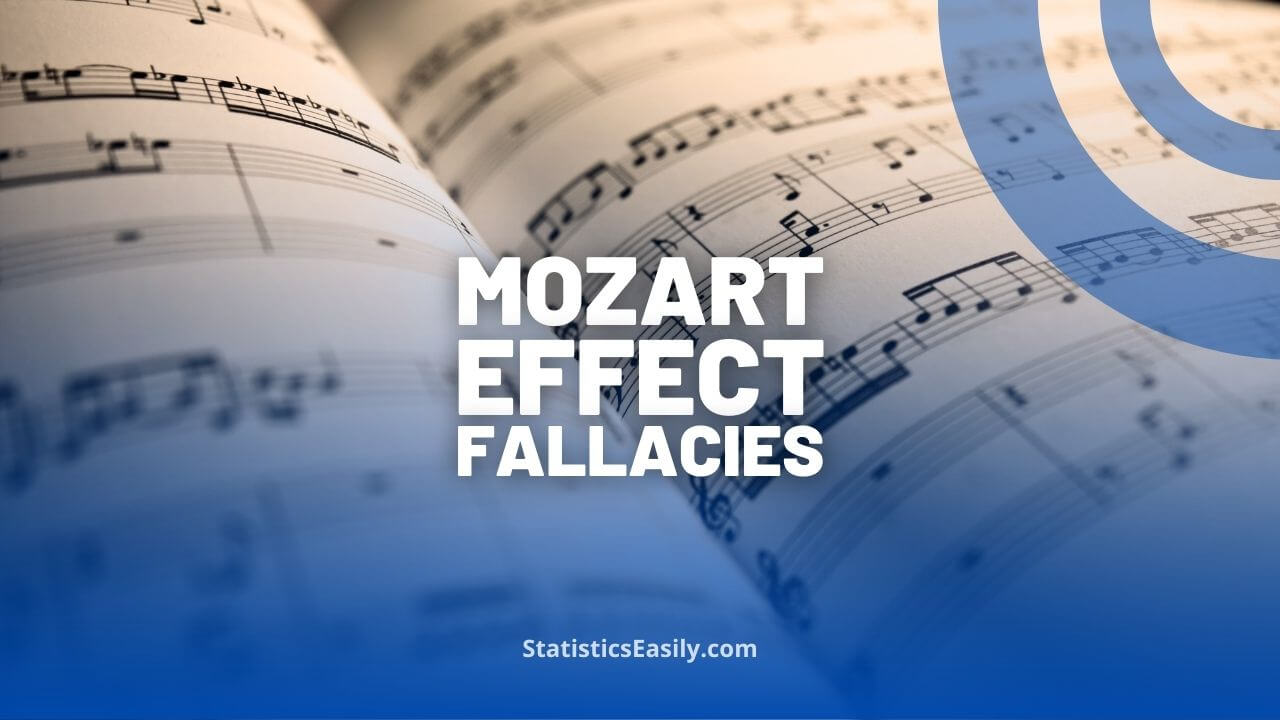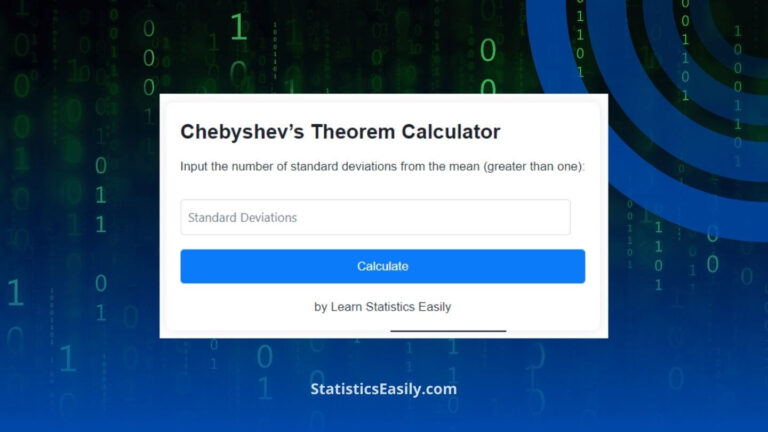How Statistical Fallacies Influenced the Perception of the Mozart Effect
Statistical fallacies like publication bias, p-hacking, and false causality may have amplified the perceived significance of the Mozart Effect, leading to a potentially overestimated understanding of the cognitive benefits of Mozart’s music.
Introduction
The educational field experienced a paradigm shift in 1993 when Rauscher, Shaw, and Ky published their study ‘Music and Spatial Task Performance,’ proposing the Mozart Effect. This term, coined later to describe the suggested cognitive enhancement derived from listening to Mozart’s music, ignited a passionate discourse among educators, researchers, and the general public.
The intrigue and appeal surrounding the Mozart Effect were further amplified by its profound implications on education and learning practices, generating widespread enthusiasm. Yet, as the dust settled and further analysis was conducted, numerous statistical fallacies emerged, casting a shadow of doubt over the initially celebrated Mozart Effect. The understanding and perceiving of the Mozart Effect in education became a complex tapestry, interwoven with questionable methodologies and potentially flawed statistical reasoning.
Highlights
- Mozart Effect suggests cognitive enhancement from listening to Mozart’s music, significantly impacting education and learning practices.
- Non-transparent reporting in Mozart Effect studies obstructs accurate assessment of the strength and consistency of the effect.
- Publication bias and cherry-picking could have skewed perceptions of the Mozart Effect, favoring positive results while sidelining contradictory findings.
- Misinterpretations of correlation and causation in Mozart Effect studies could foster unfounded belief in Mozart’s music’s cognitive-enhancing power.
- Potential p-hacking in early Mozart Effect studies may have inflated the rate of false positives, leading to non-replicable findings.
Ad Title
Ad description. Lorem ipsum dolor sit amet, consectetur adipiscing elit.
Statistical Fallacies
Understanding the role of statistical fallacies is fundamental to unraveling the perception of the Mozart Effect. Statistical fallacies refer to incorrect applications of statistical reasoning that can misinterpret and distort scientific findings. In the case of the Mozart Effect, several such fallacies have been pivotal in shaping the perception and narrative of this phenomenon.
Non-transparent reporting and other statistical fallacies such as data dredging, false causality, sampling bias, publication bias, and cherry-picking might have played substantial roles in the initial studies. These potential flaws in research methodology could have contributed to a skewed perception of the Mozart Effect, illustrating the intricate complexities and pitfalls of statistical analysis within scientific research.
Non-transparent Reporting
Non-transparent reporting represents a significant challenge in scientific literature, particularly in studies around complex phenomena such as the Mozart Effect. This term refers to the inadequate or incomplete documentation of research methodologies, data analysis procedures, and results in published reports.
In the context of the Mozart Effect, a recent meta-analysis by Oberleiter and Pietschnig highlighted the problem of non-transparent reporting. The researchers emphasized how insufficient documentation of available reports in the published literature has led to what they term ‘unfounded authority’ of individual, frequently cited studies. This lack of transparency obscures the variance and uncertainty surrounding the Mozart Effect.
Notably, non-transparent reporting inhibits the replication of studies and hinders the critical evaluation of the validity and reliability of their findings. In the case of the Mozart Effect, non-transparent reporting further fueled its over-estimation, impeding the scientific community’s ability to accurately assess the strength and consistency of the effect. It is essential to address non-transparent reporting to maintain scientific rigor, accuracy, and the advancement of knowledge.
Publication Bias and Cherry Picking
The phenomenon of publication bias could have influenced the perception of the Mozart Effect significantly. This bias refers to the tendency of journals to favor the publication of studies that demonstrate positive or significant results over those with negative or non-significant findings.
In the context of the Mozart Effect, publication bias could lead to over-representing studies supporting the cognitive enhancement hypothesis in academic literature. This over-representation could result in a skewed perception of the effectiveness of Mozart’s music in enhancing cognitive abilities among academic and lay audiences.
Simultaneously, a phenomenon called cherry-picking could also come into play. This refers to the selective reporting of studies that align with the existence of the Mozart Effect while ignoring studies that contradict it. If cherry-picking has occurred in disseminating the Mozart Effect literature, it could result in a distorted representation of the evidence, favoring ‘successful’ studies while potentially sidelining those presenting contradictory results.
While these biases are speculative based on the nature of the studies and non-transparent reporting, their potential impact underlines the importance of rigorous, transparent research practices in shaping accurate scientific discourse.
False Causality
In analyzing the Mozart Effect, cautioning against potential misinterpretations related to false causality is essential. The initial study conducted by Rauscher, Shaw, and Ky discovered a correlation between listening to Mozart’s music and an enhancement in spatial task performance. However, as the familiar statistical adage goes, “Correlation does not imply causation,” the researchers did not conclusively establish a causal relationship between these two variables.
Despite this, some sections of the public and academia may have interpreted the findings as suggestive of a causal link due to a lack of clear communication. However, this interpretation is speculative and needs further validation. Misinterpretations such as this can lead to widespread misconceptions, potentially fostering an unfounded belief in the cognitive-enhancing power of Mozart’s music.
The possibility of false causality underscores the need for accurate interpretation and transparent communication of research findings. It cautions against the allure of overly simplistic explanations for complex phenomena. It underlines the need for critical thinking in understanding and applying scientific research.
P-hacking
P-hacking, also known as data dredging, is a statistical practice that warrants careful scrutiny. It involves conducting numerous tests or performing analyses until a statistically significant result emerges. While this technique may yield seemingly compelling results in the short term, it can conduct an inflated rate of false positives and findings that do not replicate in subsequent studies.
Given the inconsistent and volatile primary study effects reported in the literature on the Mozart Effect, one might hypothesize that p-hacking could have played a role in the early studies, leading to identifying relationships that could be more attributable to chance rather than an actual effect. However, this remains speculative as there is no direct evidence of p-hacking in the original studies.
The mere potential of p-hacking serves as a reminder of the importance of rigorous and ethical statistical practices in pursuing scientific truth. It underscores the need for transparency and integrity in research design and analysis, critical factors in mitigating such statistical pitfalls.
Sampling Bias
Sampling bias, a systemic error due to a non-random sample of a population causing some members to be less likely to be included than others, can affect the perception and interpretation of research results. For the Mozart Effect, the representativeness of the sample selected for studies could influence the perceived effect size.
In the specific study design provided, the research was conducted on children aged 3 years to 4 years and 9 months enrolled in two preschools in Los Angeles County. If this group is not representative of the broader population (for instance, if children from diverse socioeconomic or cultural backgrounds or from different geographical locations were omitted), the results could overestimate the effect size.
Without more detailed demographic information and a better understanding of the study’s sampling methodology, we cannot definitively assert that a sampling bias was present. Furthermore, in the context of this study, the primary aim was not to generalize the findings to the entire population but rather to investigate whether the Mozart Effect could be observed in the specific sample chosen. Thus, while sampling bias is always a concern in scientific research, we should exercise caution in interpreting its potential influence in this context.
Ad Title
Ad description. Lorem ipsum dolor sit amet, consectetur adipiscing elit.
Conclusion
The exploration of the Mozart Effect within education is a potent reminder of the importance of robust and transparent statistical reasoning in scientific research. We can develop a more nuanced and accurate understanding of this widely-discussed phenomenon by critically examining and identifying potential statistical fallacies.
Not all of the discussed fallacies have been explicitly identified in the Mozart Effect studies but inferred based on the non-transparent reporting and the inconsistencies across different studies. Therefore, our analysis should be viewed as an indicative exploration of potential statistical missteps rather than a conclusive critique.
As we continue to conduct and interpret research, we must guard against these fallacies to ensure the validity of our findings and the integrity of our scientific narratives. The lessons gleaned from the scrutiny of the Mozart Effect can guide our quest for truth, reminding us that a keen eye for detail, rigorous analysis, and healthy skepticism are indispensable tools in the scientific toolkit.
Recommended Articles
Explore more about the intriguing world of data analysis and statistics by reading other relevant articles on our blog. Delve deeper into topics that matter to you and stay informed.
- The Role of Cherry Picking in Statistical Analysis
- Unraveling Sampling Bias: A Comprehensive Guide
- P-hacking: A Hidden Threat to Reliable Data Analysis
- How to Report Simple Linear Regression Results in APA Style
- Selection Bias in Data Analysis: Understanding the Intricacies
- Music, Tea, and P-Values: A Tale of Impossible Results and P-Hacking
Frequently Asked Questions (FAQs)
The Mozart Effect is a suggested cognitive enhancement derived from listening to Mozart’s music, as proposed in a study published in 1993.
Statistical fallacies such as publication bias, p-hacking, false causality, and others might have contributed to a potentially overestimated understanding of the Mozart Effect.
Non-transparent reporting refers to inadequate or incomplete documentation of research methodologies, data analysis procedures, and results, which can lead to a skewed perception of the phenomenon under investigation.
Publication bias refers to the tendency to favor studies demonstrating positive results. Cherry-picking is selectively reporting studies that align with the hypothesis, both of which can distort evidence representation.
False causality refers to incorrectly interpreting correlation as causation. Despite finding a correlation, the initial Mozart Effect study didn’t conclusively establish a causal relationship between Mozart’s music and cognitive enhancement.
P-hacking refers to conducting multiple analyses until a statistically significant result emerges. This can lead to an inflated rate of false positives and findings that don’t replicate in subsequent studies.
Sampling bias is an error that occurs when a population sample is not randomly selected, making certain members less likely to be included. This can affect the accuracy of research findings.
If the children selected for the Mozart Effect study weren’t representative of the broader population, this could have led to overestimating the effect size.
The discussed fallacies have been inferred based on non-transparent reporting and inconsistencies across different studies, not explicitly identified.
Maintaining rigorous and transparent statistical reasoning, avoiding oversimplified explanations, and maintaining critical thinking in understanding and applying scientific research.








